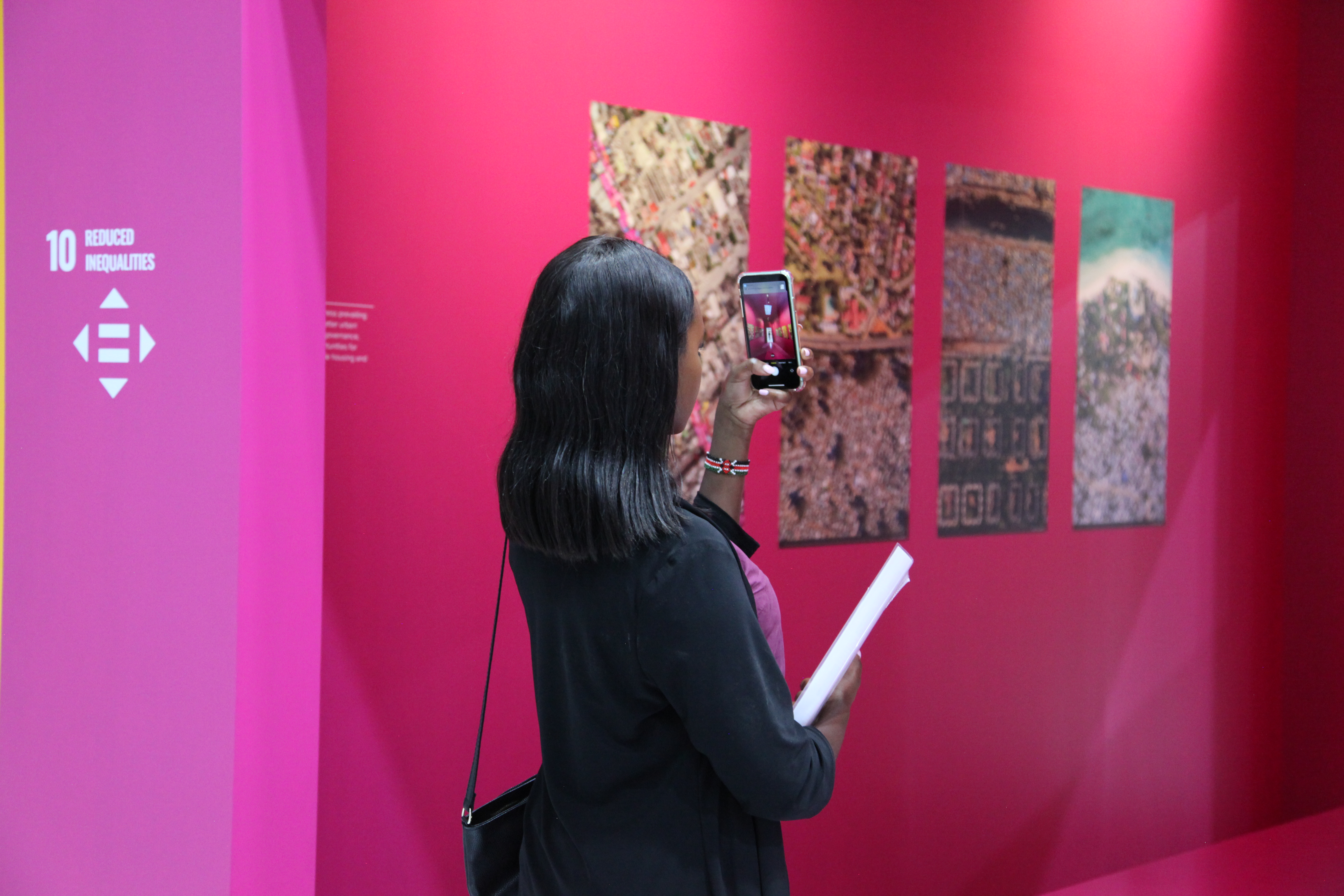Abu Dhabi, 18 February 2020 – A group of three people arrive at a mysterious yellow door cut into a panel on the outside of the UN-Habitat SDG Arena. On the wall in English and Arabic is written “SDG 7: Clean and Affordable Energy”. The small group pause, then gingerly push the door open. One of them squeals in amazement as they step into a mirror-lined room filled with multicoloured LED lightbulbs dangling from floor to ceiling. The repetition of lights caused by the reflection between the mirrors creates an infinity of twinkling lights. The three people are also reflected endlessly, becoming part of the exhibition too. Immediately they pull out their phones and start taking selfies.
One of the stars of the show at the Tenth Session of the World Urban Forum (WUF 10) in Abu Dhabi, was not a speaker, or a politician, it was a space called the UN-Habitat SDG Arena.
“We needed a space that communicated about the Sustainable Development Goals,” said Victor Mgendi, UN-Habitat Production Manager. Behind him a school group walks through the structure from room to alcove. “The concept is from an SDG wheel, but it shows the urban dimension of the goals, and it shows some of the principles UN-Habitat advocates for though our mandate in sustainable urbanization.”
The UN-Habitat SDG Arena is an interactive exhibition space, designed like a city around a main square that doubled as a small amphitheatre during events. The SDG Arena could be displayed comfortably in a modern art gallery because of the immersive, experiential moments it created. From a room that felt like an aquarium to highlight SDG 14, Life Under Water, to the rainforest room, complete with bird sounds and the smell of trees to highlight SDG 15 Life on Land, the SDG city attracted thousands of delegates who walked through its streets.
“The whole structure is like that of a city,” elaborates Maiken Lyster Thonke, the Experience Designer who worked with Mgendi and his UN-Habitat design team to bring the city to life. “When you see it from the top you will be able to see houses that are surrounding a square, you will see courtyards, you will see small alleys. You will see all the different elements you know from a city. As you see the very big house will be number 11, because number 11, Goal Number 11, is the most important goal for UN-Habitat.”
“Sustainable Development Goal 11 aims at creating cities and communities that are inclusive, safe, resilient and sustainable, explains Raf Tuts, UN-Habitat’s Director of Global Solutions. “It is the docking station for the other Sustainable Development Goals, because most of sustainable development can happen in cities and can be accelerated through action in cities.”
The team are keen to emphasise the collaborative spirit that resulted in the finished product, from the co-hosts of WUF 10, the Department of Municipalities and Transport in Abu Dhabi, the build team from Abu Dhabi National Exhibitions Company (ADNEC), to the vivid and astonishing photos by Kirsten Milhahn and Johnnie Miller.
“It was a great collaboration,” says Mgendi, “and the final outcome has been amazing. To see how people are using the space, to see how it’s been shared on social media, to see how it’s inspiring people, to see how people are using it to hold events, to do meetings, it’s been truly gratifying.”
